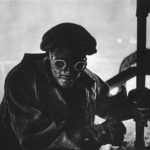Initially we got into groups and discussed the different subtopics or categories we could think of that linked to our exam title ‘Freedom and/or Limitations’. whilst creating a mind map of our initial ideas we discussed what kind of photographs we could make through these ideas. Different areas we came up with that i could focus on during the exam period could be: the limitations of varying cultures and religions, the knew freedom of technology, creativity and the growth of what is considered to be artwork, the freedom and limitations of expression over time, travel and how it can limit you but also make you free, the different that money can make how an individuals freedom or how a lack of money can becoming limiting. One of the main ideas which came to mind when considering freedom and limitations was politics and the political restrictions which are evident in our society and past 100 years and how laws, debates, protest, political freedom can be conveyed through photography.

Looking deeper into the theme of freedom and limitations i have research artists which show how artistic freedom has changed over decades and also look at the freedom and limitations shown through different materials and mediums.
Archibald MacLeish, an American poet wrote that ‘Freedom is the right to choose.’ This is considered to follow the political context and states that if you have the right to choice then you are experiencing freedom. This was then translated to artist where they began to be inspired and wanted to show freedom of choice through what they painted and what would be considered artwork. Fauvism was the first twentieth century movement in modern art. For Fauves such as André Derain and Henri Matisse freedom was the right to paint in whatever colours they chose. The paintings of the Fauves were characterized by seemingly wild brush work and strident colors, while their subject matter had a high degree of simplification and abstraction.

Fauvism can be seen as an extreme development of Van Gogh’s Post-Impressionism. Van Gogh work included landscapes, still lifes, portraits which were characterised by bold colours and dramatic, impulsive and expressive brushwork that contributed to the foundations of modern art. He was seen as a romantic artist, who chose to take artwork into his own form. The expressive brushstrokes that he used combined with a compleatly unique and unseen of vision of the world became one of the biggest inspirations of the twentieth century for artists to engage in the freedom of choice to paint/create artwork which was like no other.

Piet Mondrian, was a dutch painter and Theoretician who has become regarded as one of the greatest artists of the 20th century. As one of the pioneers of abstract art similar to van gogh, he changed the artistic direction and expanded on the limitations of art forms. He increased the abstract style on the tweentieth century and focused on geometric shapes and elements to his artwork. His expression of artwork further exercised the amount of artistical freedom one could have. His use of the three primary colours, primary values and primary directions of horizontal and vertical created a ‘universal beauty’. He was known to encounter experiments in cubism where cubists explored the choice to depict form and space.

Edgar Degas (19 July 1834 – 27 September 1917) was a French artist famous for his paintings, sculptures, prints, and drawings. He is especially identified with the subject of dance; more than half of his works depict dancers. He is regarded as one of the founders of Impressionism, although he rejected the term, preferring to be called a realist.

More detailed mindmap exploring ideas:














